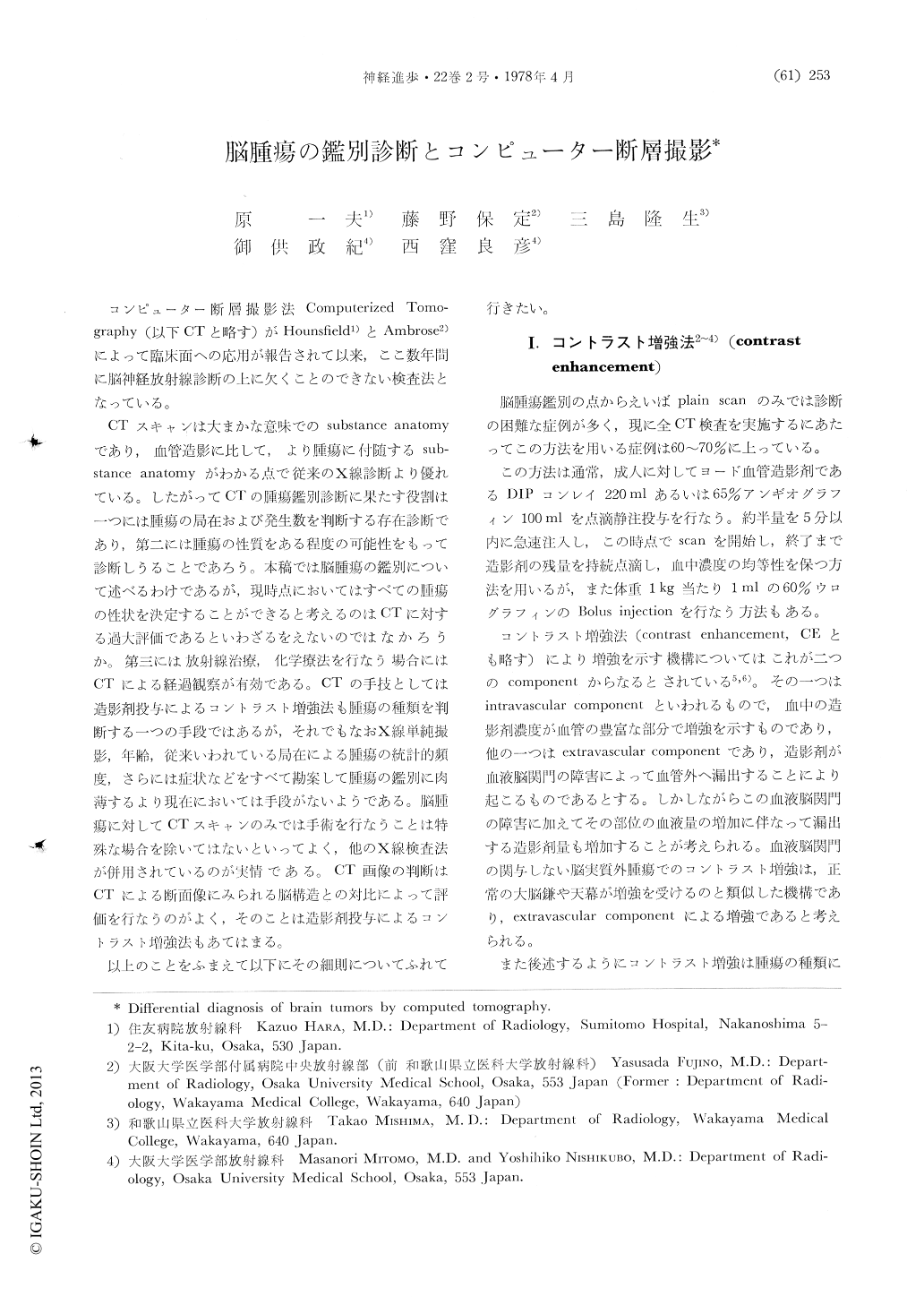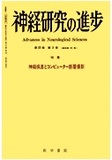Japanese
English
- 有料閲覧
- Abstract 文献概要
- 1ページ目 Look Inside
コンピューター断層撮影法 Computerized Tomo-graphy(以下CTと略す)がHounsfield1)とAmbrose2)によって臨床面への応用が報告されて以来,ここ数年間に脳神経放射線診断の上に欠くことのできない検査法となっている。
CTスキャンは大まかな意味でのsubstance anatomyであり,血管造影に比して,より腫瘍に付随するsubstance anatomyがわかる点で従来のX線診断より優れている。したがってCTの腫瘍鑑別診断に果たす役割は一つには腫瘍の局在および発生数を判断する存在診断であり、第二には腫瘍の性質をある程度の可能性をもって診断しうることであろう。本稿では脳腫瘍の鑑別について述べるわけであるが,現時点においてはすべての腫瘍の性三状を決定することができると考えるのはCTに対する過大評価であるといわざるをえないのではなかろうか。第三には放射線治療,化学療法を行なう場合にはCTによる経過観察が有効である。CTの手技としては造影剤投与によるコントラスト増強法も腫瘍の種類を判断する一つの手段ではあるが,それでもなおX線巣純撮影,年齢,従来いわれている局在による腫瘍の統計的頻度,さらには症状などをすべて勘案して腫瘍の鑑別に肉薄するより現在においては手段がないようである。
Computed tomography is a new radiological method for the diagnosis of intracranial disorders. Adding to CT patterns, recognition of the statistical data of the localisation of diseases, age, and clinical symptoms is helpful for the differential diagnosis.
On plain CT, low or high attenuation and deformity or deviation of ventricles may be recognized. Patterns of contrast enhanced CT arc classified as negative, regularly homogenously positive, irregularly unhomogeneously positive and ring-shaped positive enhancement groups.
However on routine work the delayed scantakes time, it is an instructive on some instances.

Copyright © 1978, Igaku-Shoin Ltd. All rights reserved.


